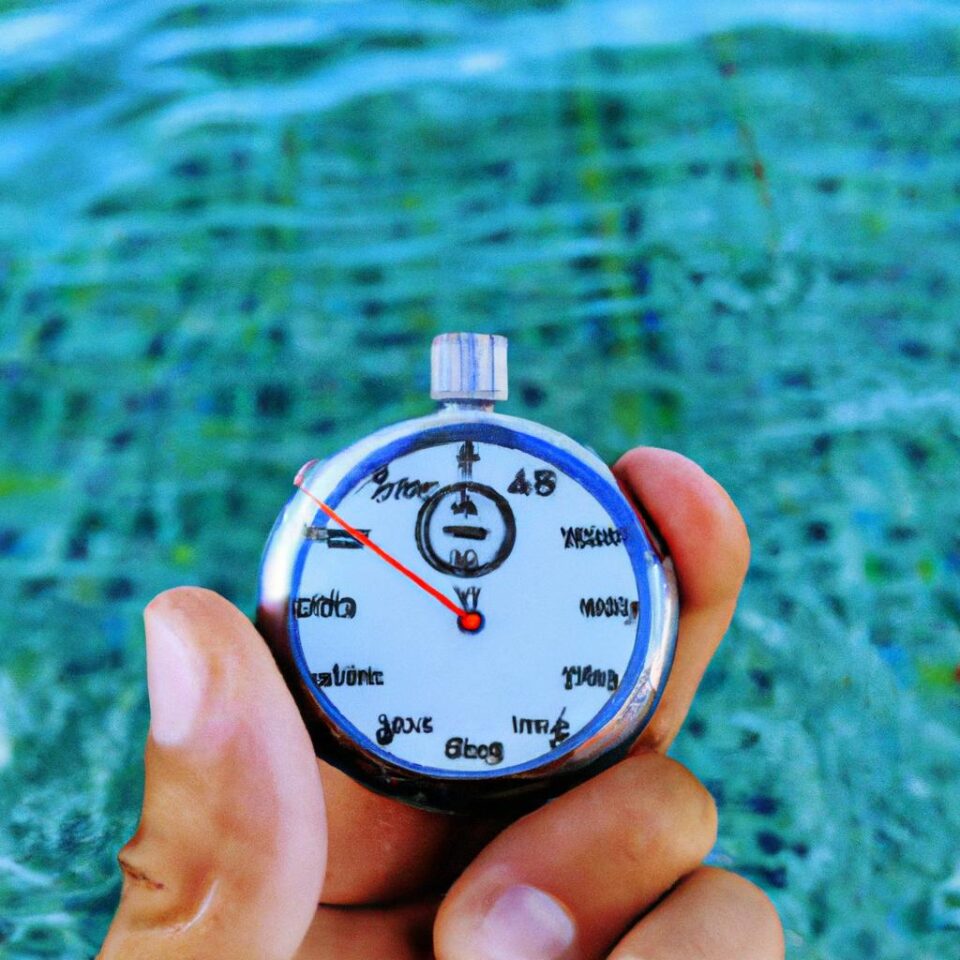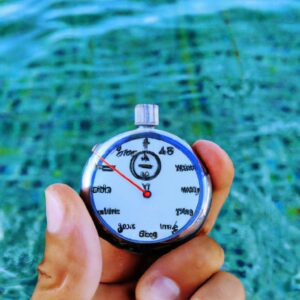Introduction to Swim Training Plans
Swim training plans are important for swimmers of all abilities, as they offer a structured approach which can help improve speed and endurance. Structured workouts provide swimmers with an organized way to reach their swimming goals and the ability to monitor progress. Swimming is a great exercise for all ages that helps to improve cardiovascular health and strength.
Having a swim training plan allows swimmers to focus on specific skills during each training session. This helps to improve technique, increase coordination, and build power and stamina. It also offers swimmers the chance to adjust their goals based on the progress they make.
Definition of Training Plans
Swim training plans are a set of organized workouts designed to help swimmers reach their goals, whether that goal is improving speed, endurance, or both. When done correctly, swim training plans can make a huge difference in performance.
In order to understand and benefit from swim training plans, it helps to learn some key definitions. For example:
- Intervals: A predetermined set of activities (such as laps) performed at specific intervals of time (for example 10 seconds).
- Sets: A set of sets of activities completed within an allotted amount of time (for example 15 minutes).
- Reps: A set of reps of activities performed within an allotted amount of time (for example 2 minutes).
- Drills: Exercises designed to improve swimming technique, power, stamina, and other important aspects.
Having a grasp of these concepts makes it much easier to understand, construct, and implement swim training plans.
Benefits and Goals Led by Training Plans
Swim training plans provide structure and guidance to help you improve your speed and endurance through swim workouts. When used together with proper nutrition, rest and warm-ups, structured workouts can help you achieve and maintain an appropriate level of physical fitness, as well as improve your performance in meets.
By including structured workouts in your plan, you will benefit from improved quality of swim practices. You will have increased stamina and energy during workouts as well as improved muscle strength that can help you swim faster and longer.
Regularly completing swim training plans will also help you work towards measurable goals such as aiming for a mile swim. Using specific drills to increase speed, practicing endurance, and incorporating nutrition into your swim program are all key factors that can help you reach your goals.
Aim for One Mile Swims
Swim training plans can help you to achieve the goal of swimming one mile. This type of goal is important for anyone who wants to improve their overall strength, speed, and endurance. To reach this goal, it is important to structure your swim workouts, use helpful tips, and remember to always practice safety.
When creating a training plan, consider the distance that you want to swim and how often. You could aim to swim a half-mile two times a week and build up to a mile over the course of six weeks, or you could set your goal for a mile as soon as possible. The goal should be something achievable, yet challenging.
Some tips that can make reaching a mile easier include stretching before each practice and taking breaks when needed. Swimming can cause fatigue, so it is essential to stay aware of how your body is feeling. Additionally, proper hydration is important to keep your body and muscles working well. Most importantly, always respect the rules of the pool and practice safety around other swimmers.
Developing Kick Strength
Kicking is an important part of swimming and helps to build strength and improve speed. To develop kick strength, it’s important to practice drills that involve kicking with fins or paddles. This can help to increase power in the kick and make it more efficient. Kicking with fins also helps to develop leg strength, which will be beneficial in the long run.
Interval kicking with fins can be done by swimming sets of short distances with fins, followed by a rest. The aim should be to increase the distance as your kick strength improves. Drills such as flutter kicks, dolphin kicks and scissor kicks can also be used to work on different parts of the kick.
Having a strong kick will not only help with improving speed but also with endurance. A strong kick will enable you to cover longer distances with ease, while not tiring out as quickly. With regular practice and drills, you should be able to see an improvement in your kick strength.
Drills to Improve Speed
In order to improve swim speed, both competitive and recreational swimmers can practice various drills in the pool. Swimmers should focus on using all four strokes with each drill, and incorporate agility drills to work on the coordination between the arms, legs, and breathing. Here are a few drills helpful in mastering each stroke:
- Freestyle: perform kick drills, including single leg drills, and use catch-up drills to practice long, powerful strokes.
- Backstroke: practice double arm backstrokes, with an emphasis on a strong finish, and utilize flutter kicks.
- Breaststroke: focus on proper pullouts and attachment of the feet to the water. Utilize sculling drills for fine tuning the hand position.
- Butterfly: increase distance per stroke by practicing ff set drills, and use dolphin kicks to maintain the pressure on your hands.
Drills such as these, when performed correctly and consistently, will help swimmers increase their speed in the pool.
Practicing Endurance
Endurance is a key factor for any swimmer and it helps to improve overall performance. It is possible to increase your endurance through regular practice and there are also ways to measure and track progress.
One of the best ways to strengthen endurance is to practice swimming longer distances or for extended periods of time. This means increasing the amount of time you swim each time you get in the pool. An easy way to do this is by adding a few extra lengths to your usual swim, or increasing the number of repetitions you do with drills. As you become more comfortable with swimming longer distances, you can begin to build up your endurance by setting goals to work towards, such as swimming a mile in one go.
Another way to track your progress and monitor your endurance is to keep a log of your workouts. Record how many lengths you swam, how long you swam for, and the type of stroke or drill you were practicing. Being able to look back at your accomplishments and how far you’ve come will help you to stay motivated and continue pushing forward.
Nutrition for Swimmers
If you want to swim faster and longer in meets, as well as during training, nutrition should be a major focus of your preparation. Eating right is essential when it comes to improving your physical strength and endurance. The better you fuel your body with the right type of foods, the more likely you are to reach your goals.
There are several key components to consider when it comes to nutrition for swimmers. Here are some of the most important:
- Eat a balanced diet that is rich in whole grains, lean proteins, antioxidant-rich fruits and vegetables, and healthy fats.
- Choose low-fat dairy products as they provide calcium and protein without a lot of fat.
- Consume complex carbohydrates like whole grains, beans, legumes, and oats on training days. This will give you plenty of energy to complete your swim workouts without feeling sluggish.
- Drink plenty of water before, during, and after your swim workouts. This will help keep your body optimally hydrated.
- Eat small meals throughout the day rather than large ones so that you don’t feel bloated or weighed down during your swims.
By following these nutrition tips, you can maximize your performance in the water and meet your swim training goals. Make sure to consult with a doctor or nutritionist if you have any questions about what type of diet is best for your individual needs.
Rest and Warmups for Swimmers
Rest is an essential part of any training plan, as it gives the body time to recover and adapt to new levels of fitness. For swimmers, getting enough rest means a better performance in meets and during practice. It also helps prevent burnout and injury. When planning rest times, swimmers should determine how much they can realistically fit into their schedule.
Warming up before swimming is also very important for all athletes, especially swimmers. Not only does it help avoid injuries from sudden exertion, but also allows muscles to work at higher levels. A good warmup also gets the heart adapted to increased physical activity to improve performance. It should include dynamic stretching, swimming drills and light jogging or jumping jacks. Cooling down is equally important for muscle maintenance and recovery. Stretching is especially beneficial to reduce fatigue and lactic acid buildup.
Beginning and Interval Training Workouts
Preparing structured workouts can be the key to improving speed and endurance for swimmers of all levels. Here are a few sample workouts to help get you started:
- Beginner interval workout: Swim 4 x 25 meters, followed by 20 seconds of rest. Repeat this 8-10 times.
- Intermediate interval workout: Swim 4 x 50 meters, followed by 30 seconds of rest. Repeat this 6-8 times.
- Advanced interval workout: Swim 4 x 100 meters, followed by 40 seconds of rest. Repeat this 4-6 times.
It is important to start with a swim that is slightly challenging but not too hard. During rest periods, you should focus on deep breathing to improve oxygen intake and enhance control over your body. As you become more experienced, you can adjust the difficulty of the swims and the rest periods to challenge yourself further.
Pre-meet Prep
Training is essential in order to perform well during swim meets, but there are also activities that can be done prior to the meet to ensure the best possible performance. Pre-meet prep activities should include both nutritional advice and mental preparation.
Nutrition is key in providing enough energy for the swimmer. The night before, a high-carb meal should be consumed to provide energy during the meet. On the day of the meet, a lighter breakfast should be eaten two to three hours before competing, including foods such as oatmeal or yogurt. Eating close to the start of race can cause an upset stomach and slow you down, so it’s important to not eat too close to the event.
Mental preparation is just as important as physical preparation. Visualization practices can help perfect technique and give the swimmer more confidence in their abilities. Build a positive mentality by remembering past successes and accomplishments. Additionally, have a plan in place so that the swimmer knows what to expect on the day of the meet.
Concluding Swim Training Plans to Improve Speed and Endurance
Swim training plans are a great way to build physical strength and endurance. Working to achieve the goal of swimming one mile, while focusing on drills for speed and endurance, will help swimmers improve their skillset. Additionally, focusing on nutrition, rest, warmups, and mental preparation will help swimmers excel in both competitive and recreational settings.
For those just getting started, sample beginning and interval workouts can help give swimmers an overview of what to expect from a training plan. Finally, don’t forget to take the time to review any points discussed in the guide and apply them to your own swim training. With this knowledge and dedication, swimmers can take their skills to the next level.
comments: 0

